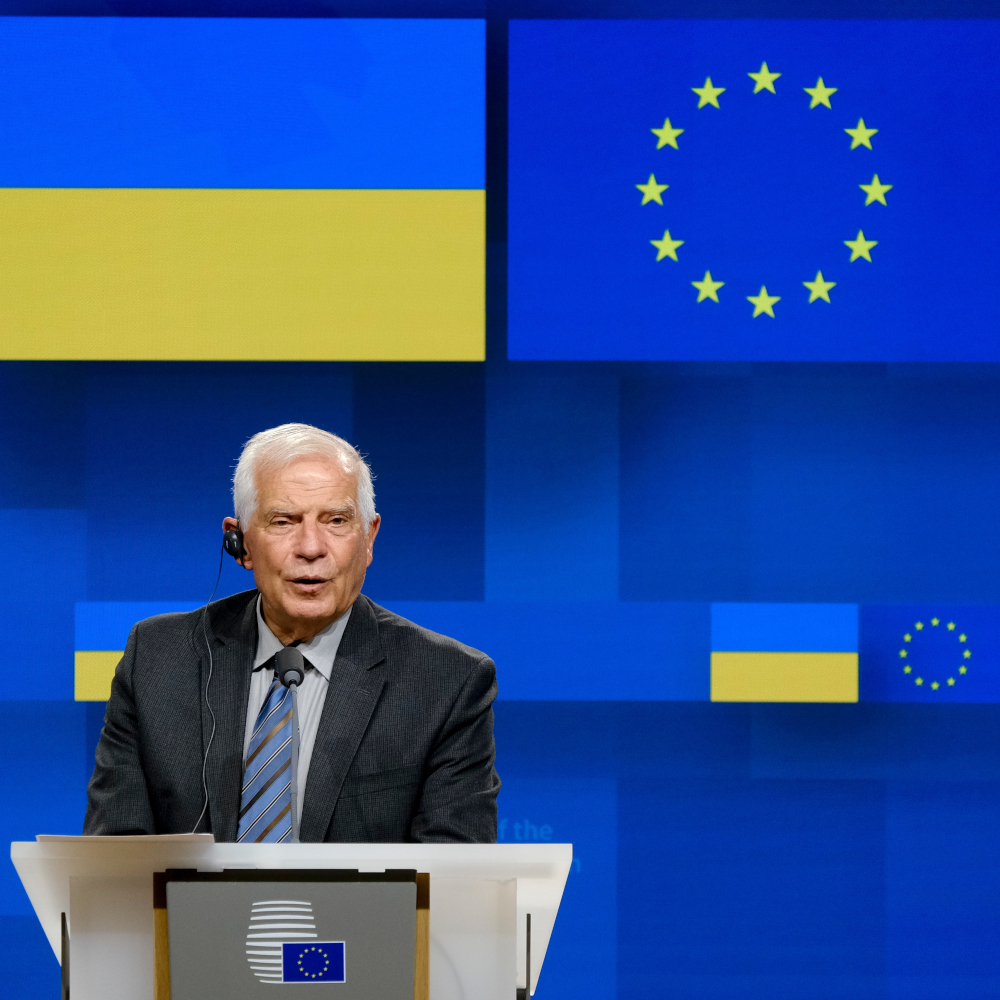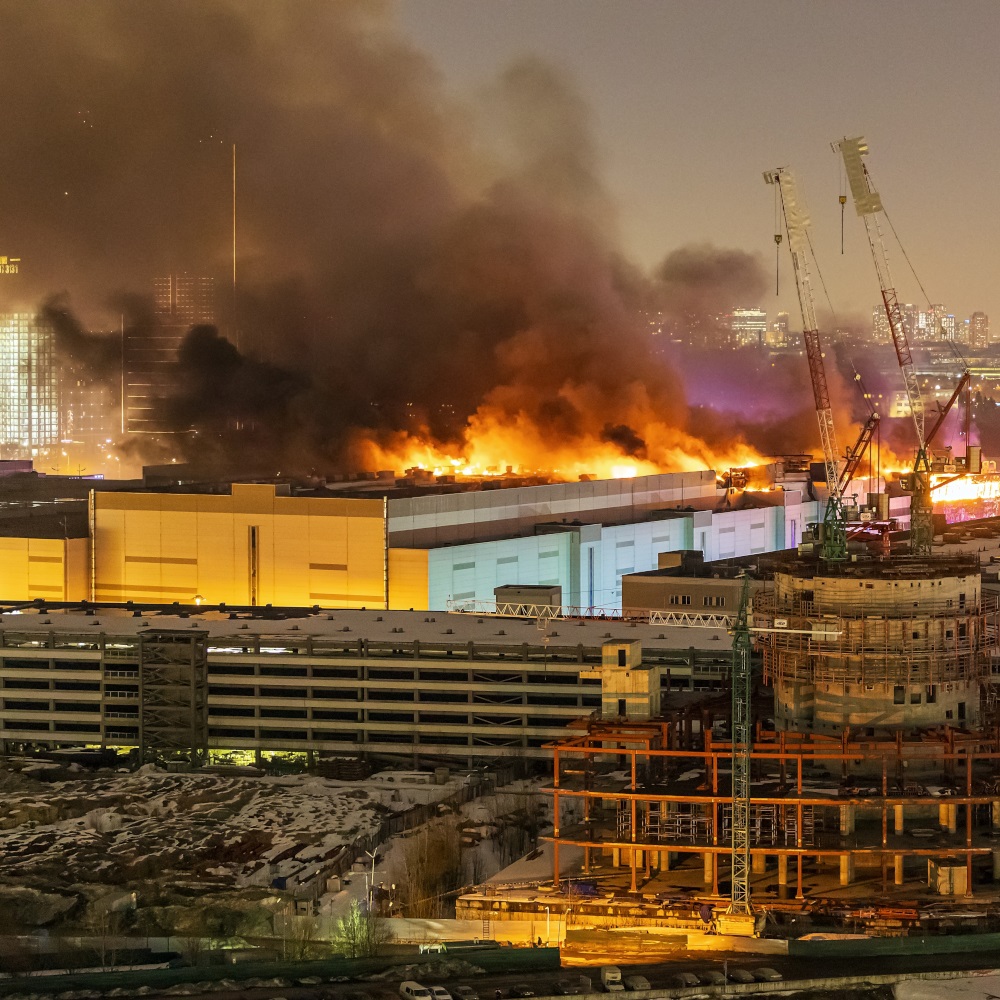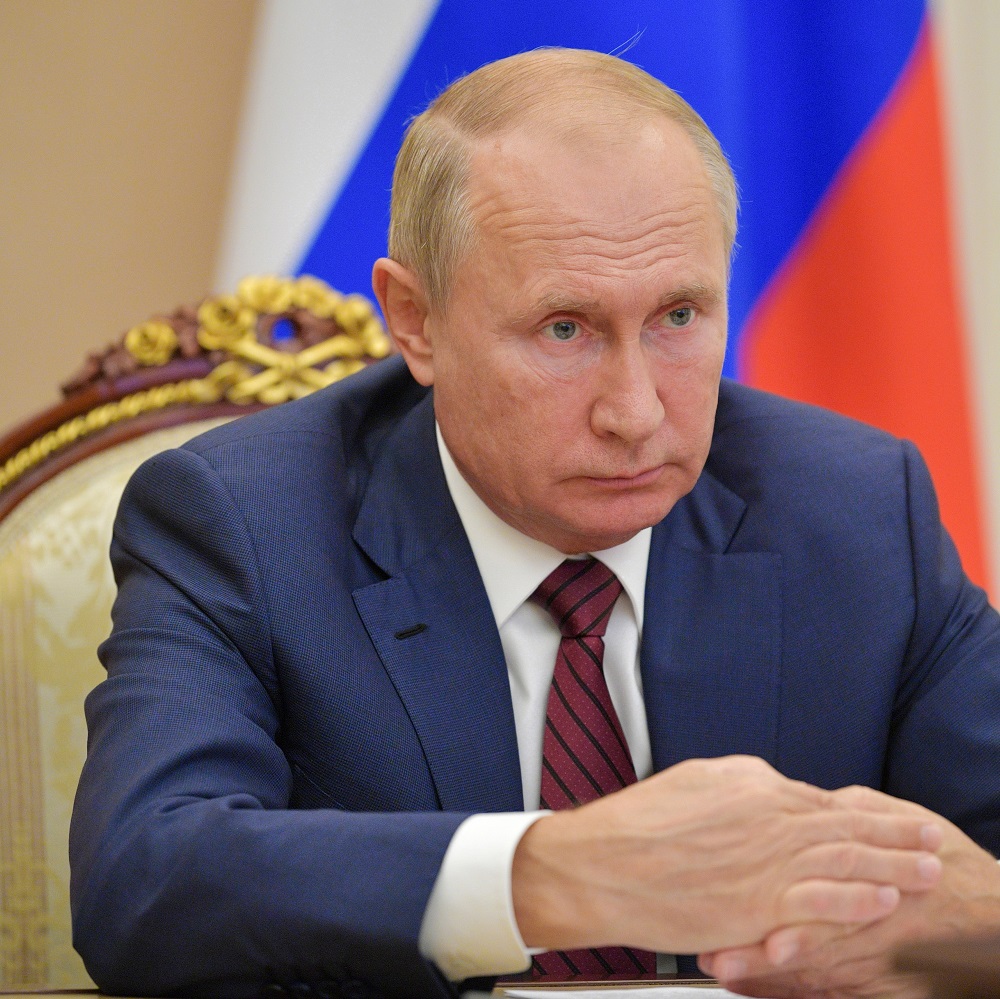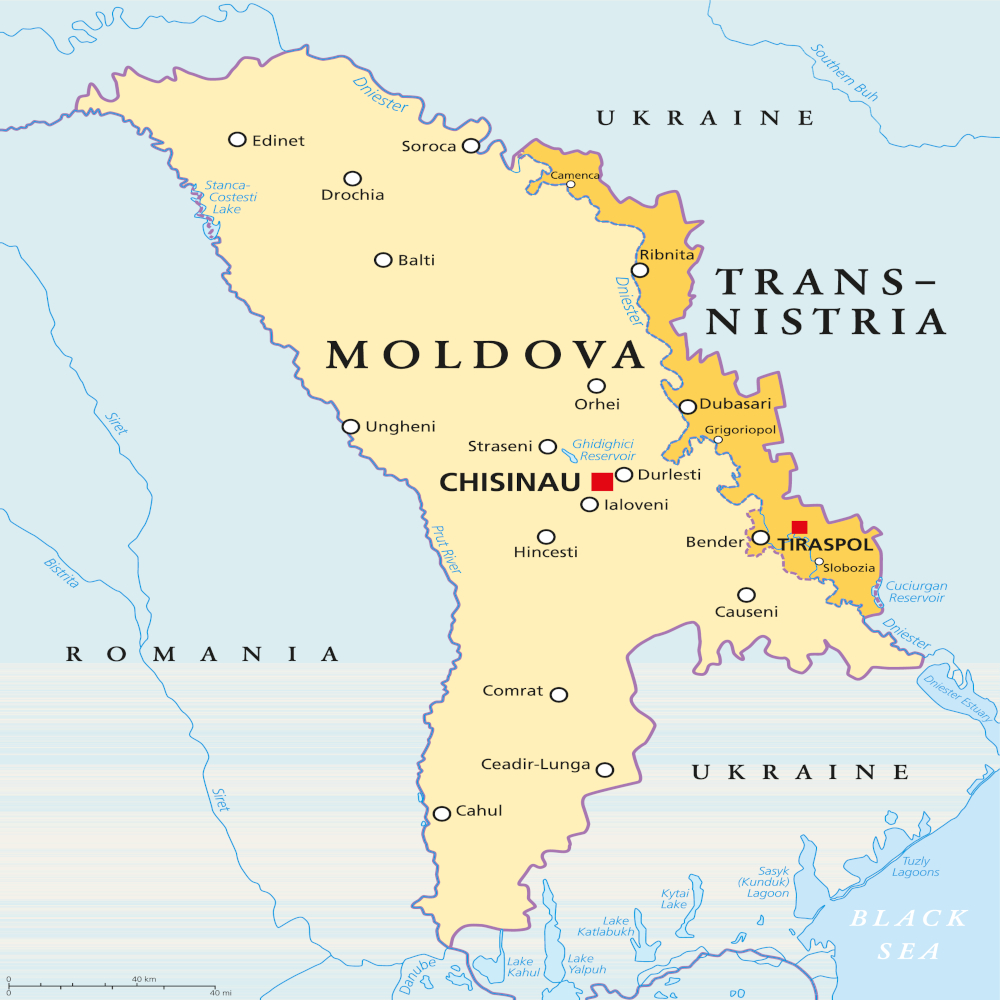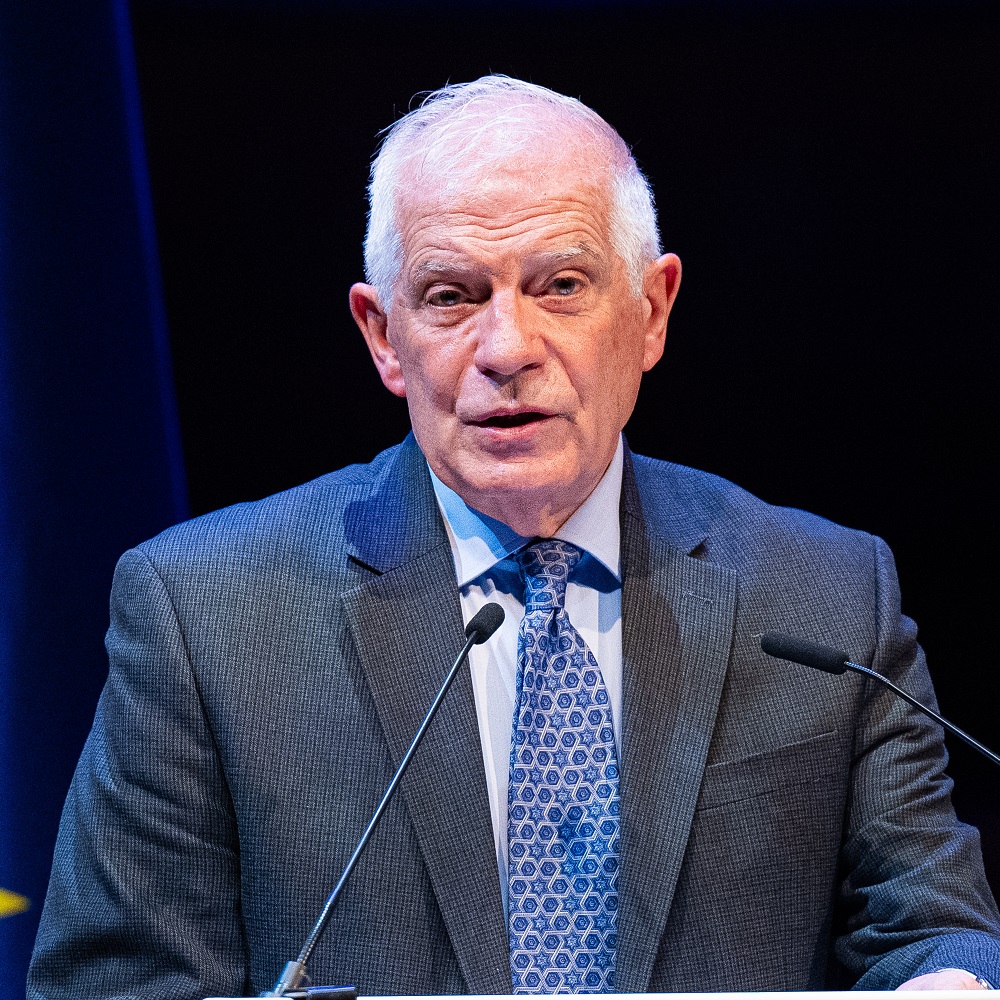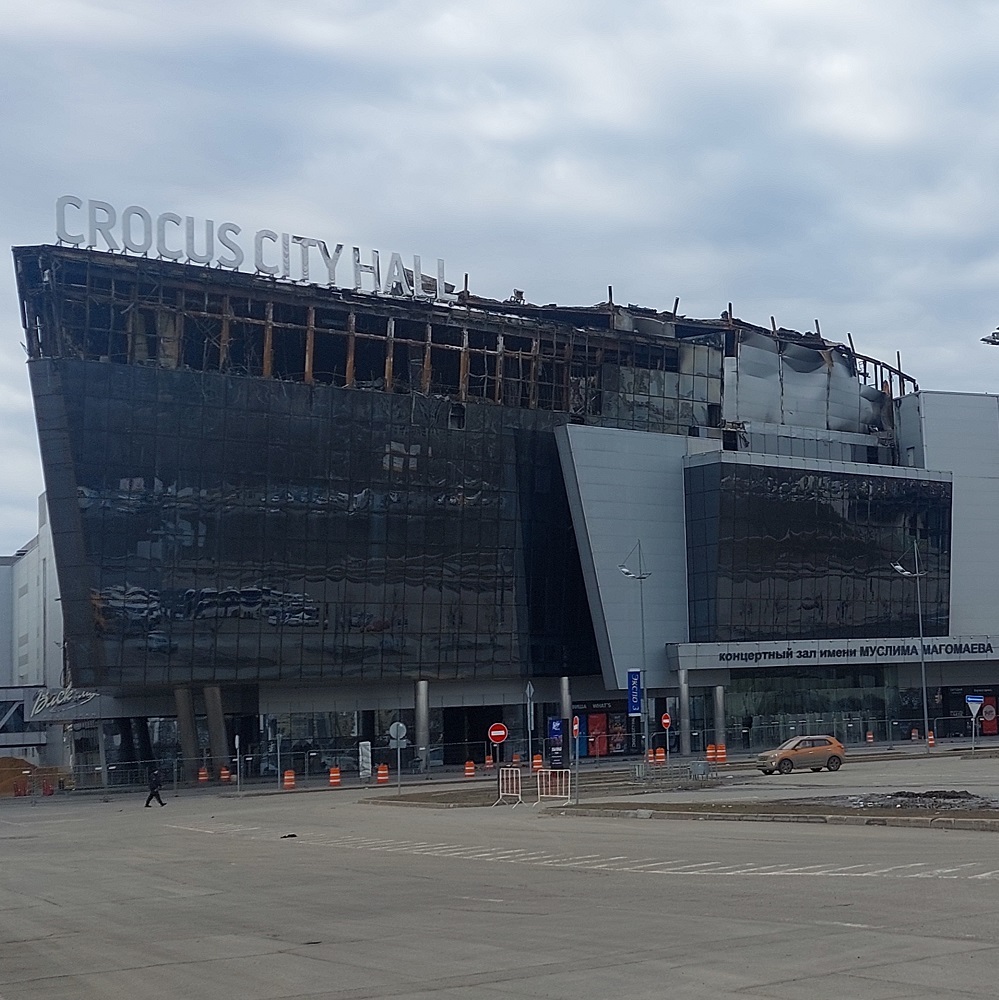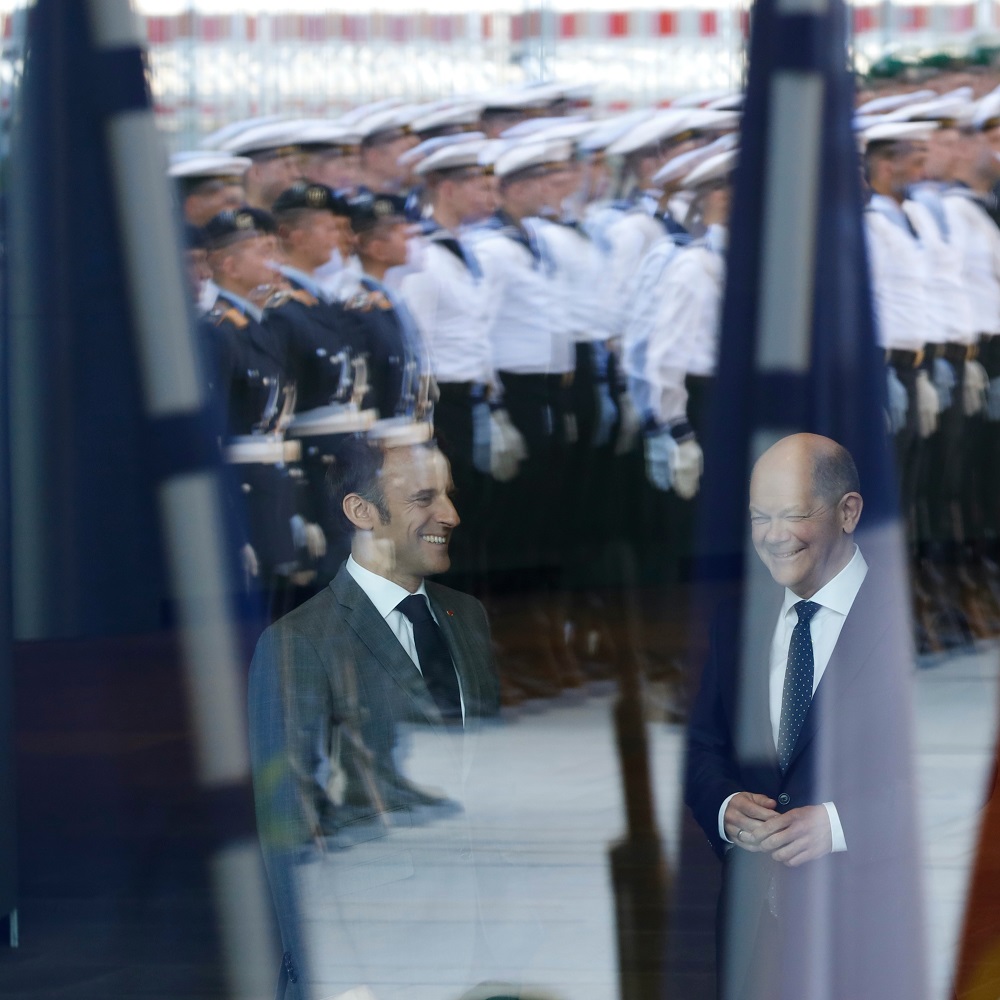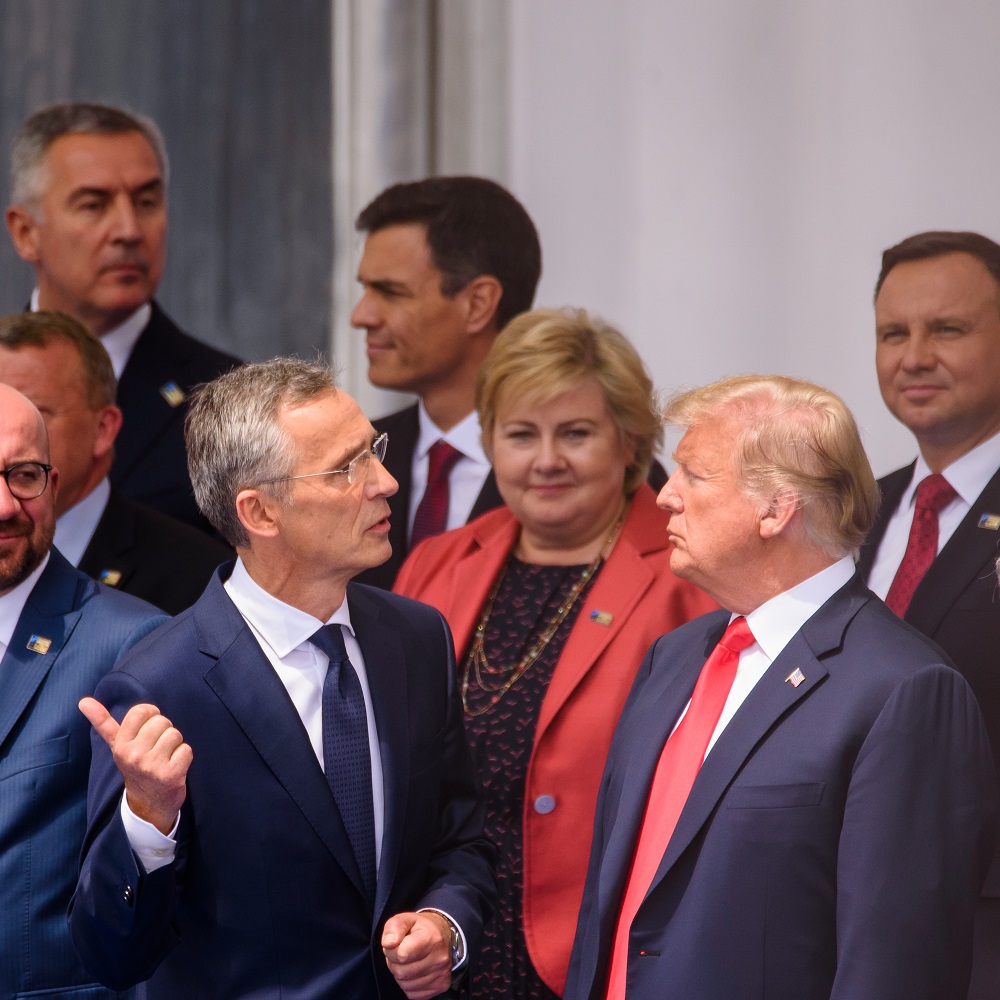
Dissecting the Realist Argument for Russia’s Invasion of Ukraine
by Oguejiofor Princewilliams Odera
On 24 February 2022, Russian troops pushed into Ukraine from multiple fronts, bombarding cities like Kharkiv and the capital Kyiv. The invasion plunged Europe into its worst security crisis in decades and prompted a massive outpouring of military aid and economic sanctions on Russia from NATO and Western allies (Ramzy 2022). There were warning signs beforehand, as Russia had massed over 100,000 troops on Ukraine’s borders for months and issued demands to roll back NATO’s presence in Eastern Europe (Roth, Dan, David and Nana 2022). Yet the full-scale invasion still came as a shock via its violation of Ukraine’s territorial sovereignty and the fundamental principle of the inadmissibility of acquiring territory by force (United Nations 2022). From a liberal perspective emphasizing democratic norms, international law, and human rights, Russia’s actions were indefensible and morally reprehensible. However, six key realist arguments can explain Russia’s rationale for the Ukraine invasion; security dilemmas and geographical insecurity, attempt to regain a sphere of influence, implementation of an offensive realist strategy, revisionism against the U.S.-led liberal international order, diversionary war theory, and autocratic insecurity and domestic politics. Realist Theory and Core Tenets Realism is one of the leading theories in the study of international relations, originating from thinkers like Thucydides, Machiavelli, Hobbes, and later articulated by 20th century scholars like E.H. Carr, Hans Morgenthau, and Kenneth Waltz (Burchill, Andrew and Richard 2013). It posits that international politics is characterized by anarchy and a struggle for power between sovereign nation-states pursuing their own national interests (Waltz 1979). Key assumptions underpin the bulk of realism: 1. States are the primary actors and the fundamental units of analysis in the anarchic international system with no supranational authority. 2. All states possess offensive military capabilities that render them potentially dangerous to one another. 3. States can never be certain of other states’ future intentions or actions, leading to mistrust and worst-case scenario planning. 4. In this self-help system, states must look out for their own national interests and survival as the principal motive (Waltz 1979; Mearsheimer 2014). 5. While economic and cultural factors are important, military force and power politics take primacy in realist analysis. Realism tends to view human nature as flawed and egoistic, distrustful of lofty ideals like global peace or international cooperation. It emphasizes pragmatism over moral principles and ethics, assuming states will act opportunistically when their interests require it (Carr 1964). The accumulation of military capabilities and economic power is seen as a means for states to increase their relative power and security in an anarchic, zero-sum world (Mearsheimer 2001). Classical realists, such as Hans Morgenthau, place a significant emphasis on human nature and decision-making elites in their understanding of international relations. They argue that politics is governed by objective laws rooted in human nature (Chimni 2017). Morgenthau, in particular, has been described as one of the most important political thinkers of the 20th century and one of the greatest realist thinkers of all times (Chimni 2017). Classical realists believe that their pessimistic vision of human nature is reflected in politics and international relations. In contrast, neorealists or structural realists, like Kenneth Waltz, emphasize the constraints imposed by the anarchic structure of the international system (Lobell 2017). Waltz’s neorealism, first outlined in his 1979 book Theory of International Politics, argues that power is the most important factor in international relations. He posits that the nature of the international structure is defined by its ordering principle, anarchy, and by the distribution of capabilities (measured by the number of great powers within the international system) (Waltz 1979). Within the neorealist school, there are two main schools of thought: defensive realism and offensive realism. Defensive realists, following Waltz, argue that states merely aim to maintain the existing balance of power for survival. They assert that the anarchical structure of the international system encourages states to maintain moderate and reserved policies to attain security. They contend that aggressive expansion upsets the tendency of states to conform to the balance of power theory, thereby decreasing the primary objective of the state, which they argue is ensuring its security (Lobell 2017). On the other hand, offensive realists like John J. Mearsheimer see states as persistently seeking opportunities for relative gain and hegemony when possible. Mearsheimer, in his groundbreaking work “The Tragedy of Great Power Politics”, argues that states seek to maximize their power and influence to achieve security through domination and hegemony. He contends that only by creating an imbalance of power in its own favour will a state be able to maximize its security (Üstündağ 2020; Wivel 2017). The Realist Rationale for Russian Invasion of Ukraine Ukraine shares a 1,500-mile border with Russia, and its core territory was formerly part of Russia until 1991 (Plokhy 2023). From Moscow’s perspective, the prospect of Ukraine aligning with the West and integrating with NATO was an existential threat to Russian power that it could not accept (Lindsay 2022). Realists argue that a Ukraine aligned with NATO could enable the deployment of offensive weaponry close to Russia’s borders and threaten its access to the Black Sea, a warm water port it has coveted for centuries (McCallion 2023). As the core of realist theory warns, the basic structure of an anarchic and self-help system means states can never feel secure about other states’ future intentions or actions (Waltz 1979). When one state enhances its security, it undermines another’s. According to Mearsheimer, “Because no state can ever be sure that other states will not use their offensive capabilities for aggressive purposes, every state is compelled to look for ways to guarantee its own survival” (2014, 77). Seen from this perspective, Russia’s invasion can be rationalized as a pre-emptive move to neutralize what it saw as an imminent strategic threat. Closely related to arguments about great power status is the realist notion of states pursuing spheres of influence or buffer zones to enhance their security. The realist argument is that all great powers in history, including Russia, have sought to control the security dynamics in adjacent regions by maintaining relations with nearby smaller states that are aligned with their interests (Mearsheimer 2019). Ukraine, with its geostrategic position between Russia and Europe, is viewed as critically important terrain in Russia’s desired sphere of influence. Realists argue that rather than the expansion of Western liberal democracy, Russia was fundamentally motivated to invade to reestablish a favourable balance of power, security arrangements, and compliant buffer states on its periphery (Trenin 2022). Allowing Ukraine to align itself closely with NATO and host potential offensive forces was seen as a step too far by Moscow. Beyond defensively reacting to perceived security threats in the region, it can be inferred that Russia’s invasion of Ukraine reflects a calculated strategy of offensive realism – persistent and opportunistic efforts to enhance its power economically and militarily to establish regional hegemony (Mearsheimer 2001). Under this view, Putin aimed to take advantage of a window of opportunity and weakness in the West to redraw boundaries and spheres of influence in Europe. Putin is said to want to rebuild a Russian sphere of influence in eastern Europe, principally embracing former Soviet republics such as now independent Estonia, Latvia, Lithuania, Belarus, Georgia and Ukraine. He has frequently bemoaned their “loss” after the Soviet Union collapsed. Putin may also hope to demonstrate to the west (and Russians) that the country is still a superpower. (Tisdall 2022, para. 2). Related to the offensive realism interpretation, some realists frame Russia’s invasion as an act of revisionism against the U.S.-dominated liberal international order that emerged after the Cold War (Kotoulas 2022). For decades, Russia complained about perceived encirclement by NATO and about what it viewed as disrespect and disregard for its interests in relation to Ukraine and its own sphere of influence (Sakwa 2022). The realist view is that even after the demise of the Soviet Union, the U.S. and its allies continued to expand in ways that threatened Russia’s core interests and left it feeling boxed in by the steady eastward march of NATO (Smith and Dawson 2022). From this perspective, Russia eventually decided it needed to upset the liberal order and use brute force to re-establish itself as a great power capable of exerting sway on its periphery. Russia under Putin has no intention of entering into an American-run liberal world order but instead wants a multipolar world in which Russia enjoys a blocking position if not an outright veto. This is because Putin himself is ideologically averse to western liberalism (Grant 2022). By forcefully altering borders and facts on the ground in Ukraine, the realist argument suggests Russia aimed to disrupt the Western-centric world order and assert its regional dominance. Another realist interpretation views Russia’s invasion through the lens of diversionary war theory – the idea that leaders may provoke external conflict to divert public attention from domestic turmoil or unpopular policies (Levy and Vakili 1992). There is precedent for Russian leaders using force abroad for domestic purposes, from Stalin’s invasion of Finland in 1939 to Putin’s wars in Chechnya and 2008 invasion of Georgia (Ferraro 2023). From this view, Putin faced a host of domestic challenges in 2022, from economic malaise, rampant corruption and wealth inequality, to the prospect of more anti-regime protests like those in 2020 and early 2022 (Sharifulin 2023; McHugh 2023). “The Russian invasion of Ukraine could have been an attempt by Putin to garner popularity by invoking a distorted interpretation of Russia’s history and playing on Russian nationalism” (Rogers and Yi 2022, para. 3). From the foregoing it is obvious that launching a nationalist, irredentist campaign to reconquer historically Russian lands in Ukraine may have been calculated to bolster Putin’s domestic standing and shift discussion away from internal grievances. The realist logic is that leaders will take aggressive foreign policy actions when domestic audiences become restive, to rally patriotic support and legitimacy. Finally, another related realist explanation rooted in Russia’s domestic politics is the theory of autocratic insecurity, or fear among authoritarian leaders like Putin that if they compromise or appear weak, it could undermine their regime survival (Kuchins and Zevelev 2012). This aligns with defensive realist logic, where states will act pre-emptively and uncompromisingly when core interests and stakes are their very existence. The argument is that Putin saw the 2022 events in Ukraine as an existential threat to his regime’s survival and legitimacy, given its claims to defend ethnic Russians and Russian-speaking populations in Ukraine (Pifer 2023). A miscalculation that resulted in losing influence over Ukraine could inflame nationalist opposition at home and tarnish Putin’s carefully cultivated strongman image. It is evident that Putin’s war is motivated by longstanding concerns that if Russia doesn’t reassert its control over the territories it traditionally dominated, his regime – along with Russia’s status as a great power – will be undermined. The autocratic insecurity thesis suggests Putin felt he had to escalate in Ukraine to ensure his own political survival and Russia’s place as a relevant great power. Counterarguments and Moral Debates While the realist perspective offers several compelling interpretations of Russia’s strategic calculations and motivations underlying the Ukraine invasion, it leaves many fundamental questions unanswered and provokes heated moral debates. First, even if Russia felt genuine security concerns or resented Western encroachment, it had many alternative foreign policy options short of a full-scale war that caused catastrophic death and suffering. Failure to pursue diplomacy or de-escalation is difficult for realists to fully explain or justify. Second, a core tenet of the Westphalian system of nation-states is that countries cannot violate the sovereignty and territorial integrity of others through force or aggression. Russia’s actions obliterated this international norm, raising questions about the validity of applying an amoral, power-politics lens that glosses over legal and human rights considerations (Kampmann 2021). Just as a burglar cannot be the judge of his own cause, you cannot allow a nation to be the sole arbiter of its own interests against those of the rest of the world whenever that happens to militate against the general interest and settlements Third, a consistently neglected component in realist thought is the key role of ideological and domestic factors in shaping interests and threat perceptions. Putin’s Russkiy Mir (“Russian World”) ideology views Ukraine as an artificial state and integral part of the greater Russia – a visceral belief that drove many of his decisions as much as geopolitical power calculations (Suslov 2022). The invasion thus cannot be fully explained without understanding the pseudo-historical mythmaking that permeated the Kremlin’s worldview. Finally, while providing interesting insights into Russia’s strategic cost-benefit analysis, realist arguments struggle to wrestle with the ethics and wisdom behind the invasion. Even if the goals aligned with maximizing Russia’s national interests, the terrible human costs and economic damage now suffered by Russia itself cast the decision as potentially catastrophic and self-defeating overreach. Conclusion In conclusion, the realist theoretical prism of international relations offers several potentially compelling rationales for Russia’s 2022 invasion of Ukraine – security dilemmas, spheres of influence, offensive realism, revisionism against the liberal order, diversionary war, and autocratic insecurity. These arguments help elucidate how Russia assessed its strategic interests and the potential costs and benefits surrounding the attack. At the same time, the realist perspective is limited in several respects. It glosses over the war’s violation of international law and sovereignty norms. It cannot fully explain Russia’s diplomatic misfires or the moral dimensions surrounding humanitarian atrocities and the terrible destruction inflicted. And its focus on systemic incentives neglects the key role Russian domestic politics, pseudo-historical mythos, and Putin’s own ideological zealotry played in driving the conflict. Ultimately, while the realist lens provides useful analytical tools for dissecting state behaviour and interests, it is inherently amoral and therefore unsuited to grapple with complex human tragedies such as Russia’s invasion of Ukraine. References Burchill, Scott, Andrew Linklater, and Richard Devetak. 2013. Theories of International Relations. Bloomsbury Academic. Carr, Edward Hallett. 1964. The Twenty Years’ Crisis, 1919-1939: An Introduction to the Study of International Relations. New York: Harper & Row. Chimni, Bhupinder S. 2017. “The Classical Realist Approach to International Law: The World of Hans Morgenthau.” In International Law and World Order: A Critique of Contemporary Approaches, 38-103. Cambridge University Press. https://doi.org/10.1017/9781107588196.004. Ferraro, Vincent. 2023. “Why Russia Invaded Ukraine and How Wars Benefit Autocrats: The Domestic Sources of the Russo-Ukrainian War.” Center for Asian Studies/ Russia & Post-Soviet Space Section, University of São Paulo (LEA-USP). https://papers.ssrn.com/sol3/papers.cfm?abstract_id=4522176. Grant, Stephanie. 2022. “Russia’s Ukraine Invasion Is Not Just about Borders or Power. For Putin, It’s about Identity.” ABC News, February 24. abc.net.au/news/russia-ukraine-invasion-borders-power-vladimir-putin-identity/100858372. Kampmann, Christoph. 2021. “The Treaty of Westphalia as Peace Settlement and Political Concept.” In International Law and Peace Settlements, edited by Marc Weller, Matilda Retter, and Attila Varga, 64-85. Cambridge University Press. https://doi.org/10.1017/9781108627856.005. Kirby, Jen, and Jonathan Guyer. 2022. “The Increasingly Complicated Russia-Ukraine Crisis, Explained.” Vox, February 23. https://www.vox.com/22917719/russia-ukraine-invasion-border-crisis-nato-explained. Kissinger, Henry. 1994. Diplomacy. New York: Simon & Schuster. Kotoulas, Ioannis E. 2022. “Russia as a Revisionist State and the 2022 Invasion of Ukraine.” In The Russian-Ukrainian War (2014-2022): Historical, Political, Cultural-Educational, Religious, Economic and Legal Aspects, 1-10. Baltija Publishing. https://doi.org/10.30525/978-9934-26-223-4-6. Kuchins, Andrew C., and Igor Zevelev. 2012. “Russian Foreign Policy: Continuity in Change.” The Washington Quarterly 35, no. 1: 147-161. https://doi.org/10.1080/0163660X.2012.642597. Levy, Jack S., and Lily I. Vakili. 1992. “Diversionary Action by Authoritarian Regimes: Argentina in the Falklands/Malvinas Case.” In The Internationalization of Communal Strife, edited by Manus I. Midlarsky, 118-146. Routledge. Lindsay, James M. (Host). 2022. “Putin’s Choices, With Michael Kimmage.” In The President’s Inbox. Podcast audio, March 29. Council on Foreign Relations. https://www.cfr.org/podcasts/putins-choices-michael-kimmage. Lobell, Steven E. 2017. “Structural Realism/Offensive and Defensive Realism.” Oxford Research Encyclopedias, International Studies. https://doi.org/10.1093/acrefore/9780190846626.013.304. McCallion, C. 2023. “Assessing Realist and Liberal Explanations for the Russo-Ukrainian War.” McHugh, D. 2023. “Russia’s Economy Holds Up, but Growing Challenges Test Putin.” The Associated Press, March 13. https://apnews.com/article/russian-economy-ukraine-war-putin-sanctions-0231252b7a145040530245b58590f7f0. Mearsheimer, John J. 2001. The Tragedy of Great Power Politics. New York: W.W. Norton. Mearsheimer, John J. 2014. “Why the Ukraine Crisis Is the West’s Fault: The Liberal Delusions That Provoked Putin.” Foreign Affairs 93, no. 5: 77-89. https://www.jstor.org/stable/24483306. Mearsheimer, John J. 2019. “Bound to Fail: The Rise and Fall of the Liberal International Order.” International Security 43, no. 4: 7-50. https://doi.org/10.1162/isec_a_00342. Pifer, S. 2023. “Russia, Ukraine and Existential War.” Stanford University, The Center for International Security and Cooperation. https://cisac.fsi.stanford.edu/news/russia-ukraine-and-existential-war. Plokhy, Serhii. 2023. “Serhii Plokhy: ‘Russia Thought It Was Invading the Ukraine of 2014’.” Chatham House – International Affairs Think Tank. https://www.chathamhouse.org. Ramzy, Austin. 2022. “The Invasion of Ukraine: How Russia Attacked and What Happens Next.” The New York Times. https://www.nytimes.com/2022/02/24/world/europe/why-russia-attacked-ukraine.html. Rogers, K., and J. Yi. 2022. “How the War in Ukraine Might Change Putin’s Popularity among Russians.” FiveThirtyEight, March 11. www.abcnews.com/538. Roth, Andrew, Dan Sabbagh, David Blood, and Nana de Hoog. 2022. “Russia-Ukraine Crisis: Where Are Putin’s Troops and What Are His Options?” The Guardian, February 14. https://www.theguardian.com/international. Sakwa, Richard. 2022. The Russia Scare: Fake News and Genuine Threat. 1st ed. Routledge. https://doi.org/10.4324/9781003177401. Sharifulin, Valery. 2023. “More Corrupt, Fractured and Ostracised: How Vladimir Putin Has Changed Russia in Over Two Decades on Top.” The Conversation. https://theconversation.com/more-corrupt-fractured-and-ostracised-how-vladimir-putin-has-changed-russia-in-over-two-decades-on-top-188761. Smith, N. R., and G. Dawson. 2022. “Mearsheimer, Realism, and the Ukraine War.” Analyse und Kritik 44, no. 2. https://doi.org/10.1515/auk-2022-2023. Suslov, Mikhail. 2018. ““Russian World” Concept: Post-Soviet Geopolitical Ideology and the Logic of “Spheres of Influence”.” Geopolitics 23, no. 2: 330-353. https://doi.org/10.1080/14650045.2017.1407921. Tisdall, Simon. 2022. “The Edge of War: What, Exactly, Does Putin Want in Ukraine?” The Observer, February 12. https://www.theguardian.com/world/2022/feb/12/the-edge-of-war-what-exactly-does-putin-want-in-ukraine. Trenin, Dmitri. 2022. “Why Realpolitik Still Shapes Russia’s Geopolitics.” Carnegie Moscow Center, February 28. https://carnegiemoscow.org/commentary/86588. United Nations. 2022. “UN Resolution Denouncing Russian Invasion of Ukraine Passes as Moscow Is Further Isolated.” UN News. https://news.un.org/en/story/2022/03/1113152. Üstündağ, G. M. 2020. “A Critical Analysis of Mearsheimer’s “Offensive Realism”: The Rights and Wrongs.” Atlas Journal 6, no. 35: 1005-1013. https://doi.org/10.31568/atlas.553. Waltz, Kenneth N. 1979. Theory of International Politics. Boston: McGraw-Hill. Wivel, Anders. 2017. “Realism in Foreign Policy Analysis.” Oxford Research Encyclopedias. https://doi.org/10.1093/acrefore/9780190228637.013.475.









